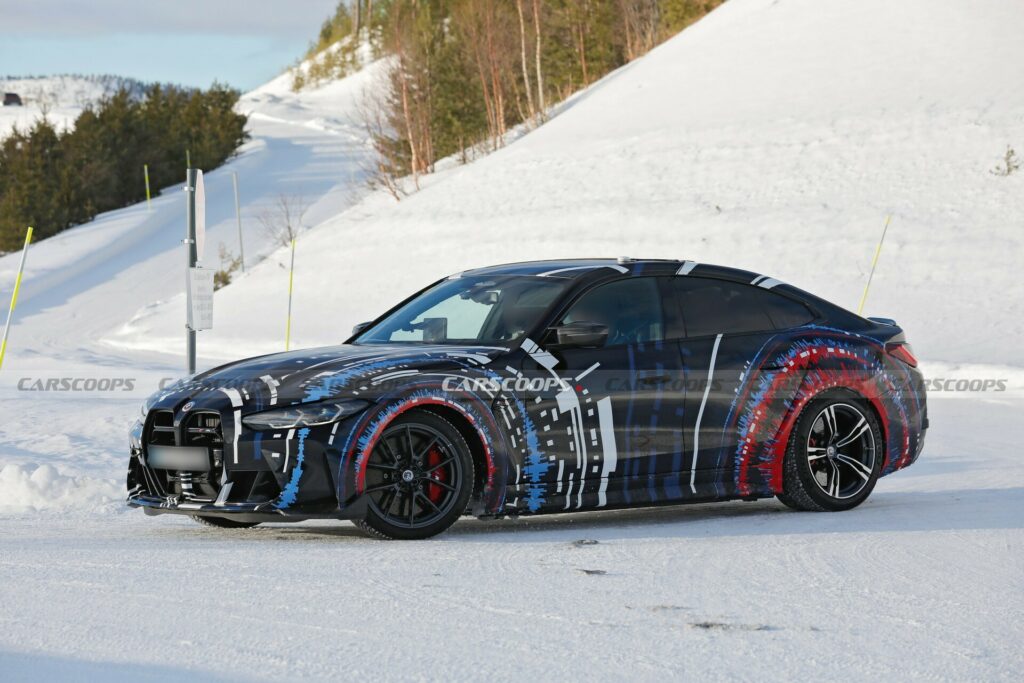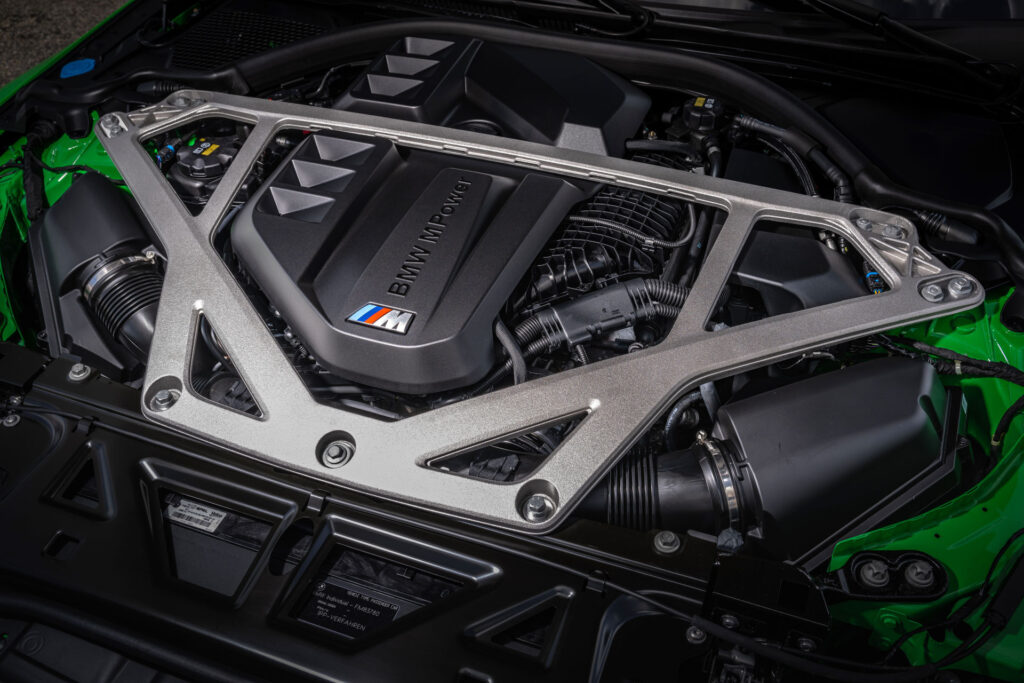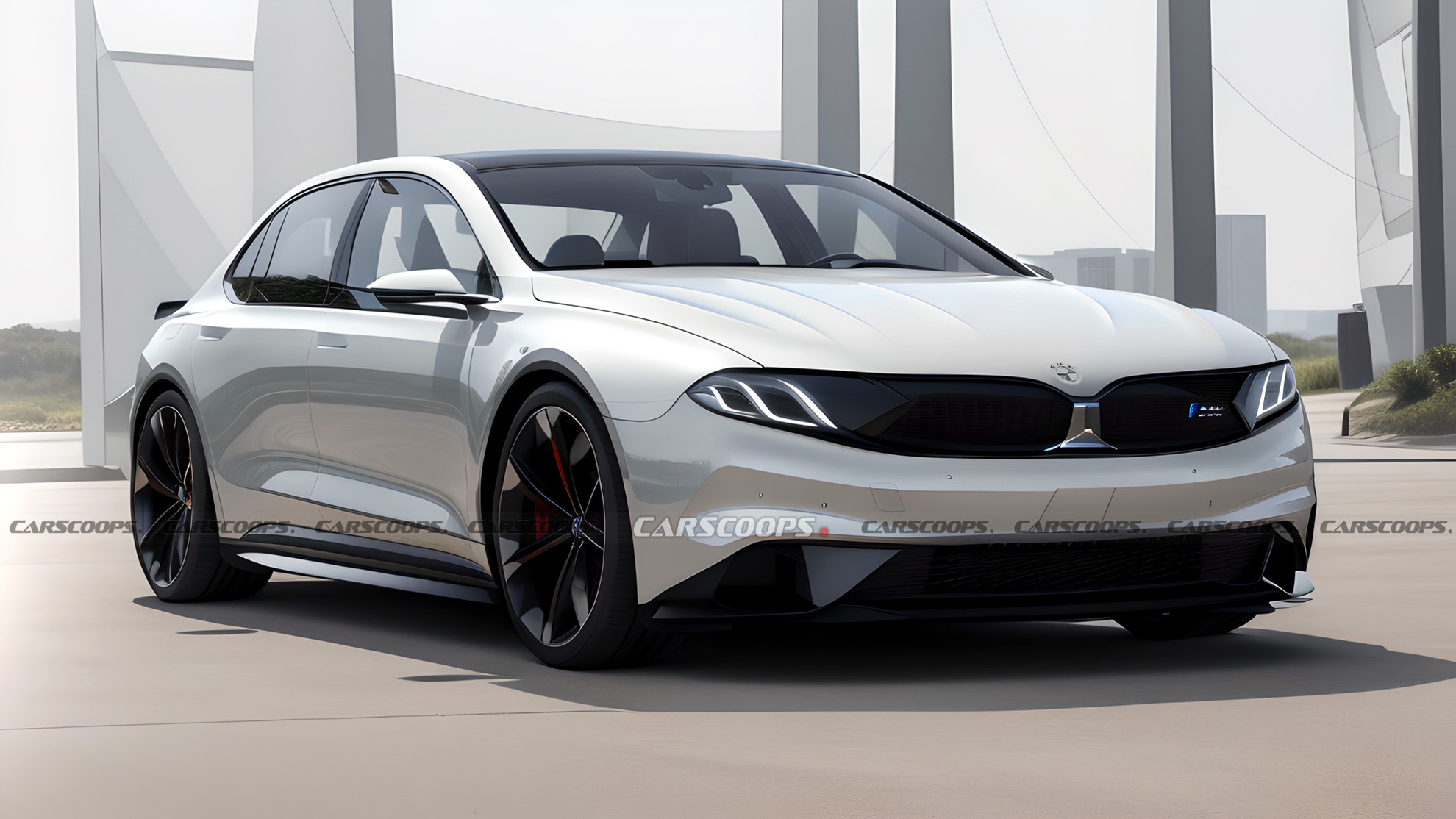- The next BMW M3, expected to debut around 2028, will feature a mild-hybrid system instead of a plug-in hybrid like the M5.
- Powered by a 48-volt mild-hybrid inline-six engine, the next combustion M3 will be offered alongside an electric version.
- M expects at least 80 percent of its deliveries to be EVs by 2030, with only a fraction featuring plug-in power.
The next BMW M3 is going electric. When the next generation of BMW’s best-selling high-performance sports car arrives towards the back end of the decade, both EV and hybrid-assisted combustion versions will be available. But don’t expect the hybrid to be a plug-in like the new G90 M5 sedan and Touring models. No, BMW’s sticking to its guns with a less cumbersome, lighter approach.
Related: Fear Not, The 6-Cylinder BMW M3 Will See Another Generation
BMW’s M division has already confirmed that the combustion-powered replacement for today’s M3 will retain straight-6 power, and now Dirk Häcker, head of development at BMW’s high performance division told Carscoops that the next M3’s heart will be a 48-volt mild hybrid powertrain and not a PHEV.
AMG C63 S: Heavy on Power, Heavier on Weight
The M3’s most obvious rival, the Mercedes-AMG C63 S, features a heavily electrified four-cylinder engine to help boost its power output to 671 hp (680 PS). But the solution adds a huge amount of weight, as it does on the new M5. Unlike the M5, however, which can do at least 42 WLTP miles (67 km) on electric power, the C63 has a range of just 8 miles (13 km).
Why No PHEV?
Speaking at the launch of the G90 series M5 in Munich, Häcker, a BMW M veteran, and number two to CEO Frank van Meel, said there was no point in adding the extra weight of a PHEV system unless you were going to get the benefit of a usable electric range, which has practical benefits as well as massive tax ones in select markets.
You Can Thank The Electric M3 for that
But since BMW will also sell an EV version of the M3, it can afford to keep the combustion version lighter and purer. Both models will ride on the same Neue Klasse platform that debuts next year on the new iX3 SUV and will then be used for the new 3-Series, scheduled for launch in 2026. The M3 duo likely won’t arrive on the market until later, the electric version debuting first, in 2027, and the ICE car following.

The addition of mild-hybrid tech will cut emissions slightly without adding too much weight and will provide a small boost to help fill the gap between a driver pressing his right foot and the turbos walking up – assuming BMW hasn’t adopted C63-style electric turbochargers. The small electric motor inside the transmission of the current mild hybrid M340i only makes 11 hp (11 PS), but generates a solid 148 lb-ft (200 Nm) of torque.
Power Predictions
Häcker wouldn’t be drawn on exactly how much power the next ICE car will make, but our guess is that it’ll be north of 600 hp (608 PS). The current M3 Competition launched in 2021 with 503 hp (510 PS), but a tweaked version of the same S58 six pumps out 542 hp (550 PS) in the M3 CS and M4 CSL.

Whatever BMW M ends up extracting from the ICE M3’s inline six, it will still be far less powerful than the EV, though that will of course be much heavier. M has been spied testing a current i4 fitted with wide arches and converted to run a quad motor drivetrain capable of producing over 1,000 hp (1,104 PS). However, the electric M3 might not deliver that much grunt, at least not in its base specification.
M3 Badging Stays Consistent
Although BMW has trademarked the iM3 name, CEO van Meel said last November that the electric M3 would continue to use the same badge as the combustion car. Häcker didn’t say at the M5 launch which M3 he thought would be more popular, but it sounds like BMW is betting on the EV.
The company’s best-selling M car is the i4 M50 and M predicts EVs will take 80 percent of sales by the decade’s end, with most of the remaining deliveries accounted for by combustion cars and only a tiny number being PHEVs.
The images in this article are Carscoops illustrations showing how the next M3 and iM3 could look and are not endorsed by BMW.







